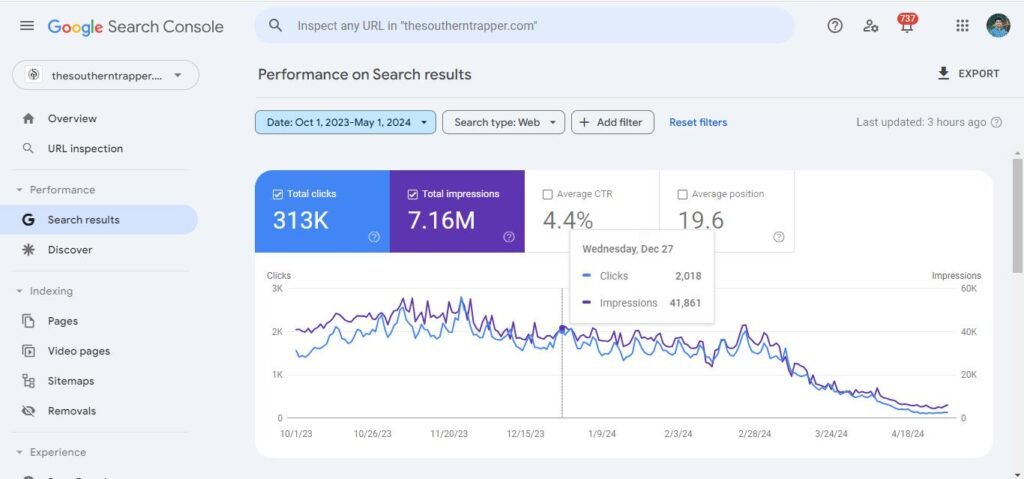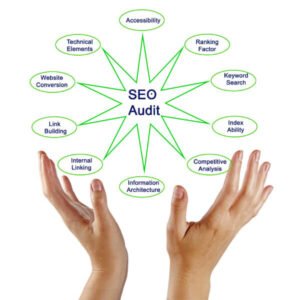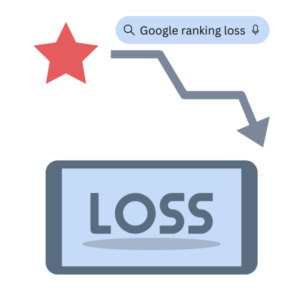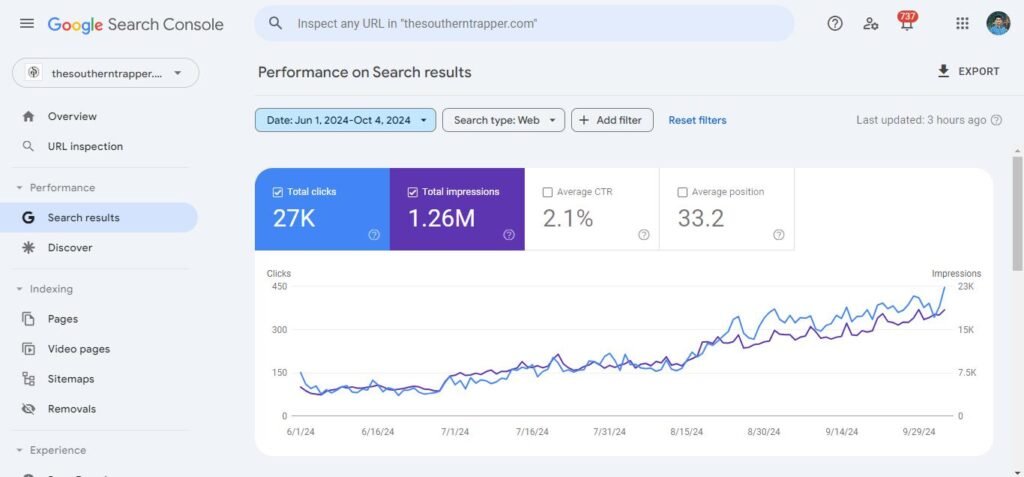Have you ever noticed a sudden drop in your website’s rankings? If you’re experiencing a website rankings loss, you’re not alone. Websites can lose rankings for various reasons, and it’s critical to conduct a website rankings loss audit to figure out why this happens and how to recover. A rankings drop can severely impact traffic, lead generation, and sales, so you need to act fast. This guide walks you through the steps of auditing your site, understanding what went wrong, and recovering lost rankings.
What Is a Website Rankings Loss Audit?

A website rankings loss audit is a comprehensive evaluation of your website when it experiences a drop in its search engine rankings. The goal is to figure out why your rankings are declining and provide solutions to recover them. This audit typically includes reviewing technical SEO, content quality, backlinks, and Google algorithm updates that might affect your site’s performance.
Why Do Rankings Drop?
1. Algorithm Updates
Google frequently updates its search algorithms to provide users with the most relevant and high-quality results. These updates can either be minor adjustments or significant core updates that shift how Google evaluates websites. When a site is not optimized for the new standards, its rankings may drop.
How Algorithm Updates Impact Rankings:

- Core Updates: These broad updates often focus on improving the overall relevance of search results. Google might give higher preference to content that better matches search intent or is of higher quality. If your site isn’t keeping up with these changes, it could fall in rankings.
- Specialized Updates: These focus on specific aspects, such as Google’s Page Experience update, which prioritizes sites that load quickly, are mobile-friendly, and have good UX (User Experience). Not adhering to these guidelines could result in a ranking drop.
- Content Relevance: Sometimes, an algorithm update might shift the focus toward newer, more relevant content. If your pages don’t get updated regularly, they may no longer align with the evolving expectations of Google’s algorithms.
What to Do:
- Regularly monitor algorithm changes using tools like SEMrush Sensor or Moz’s Algorithm Change History to understand if a drop aligns with a recent update.
- Stay updated on Google’s announcements regarding algorithm changes to proactively optimize your site.
- If affected, re-evaluate your content, user experience, and technical SEO to align with the latest update’s requirements.
2. Technical SEO Issues
Technical SEO encompasses the backend elements of your website that make it crawlable, indexable, and accessible to both users and search engines. Even minor issues can severely impact rankings if left unchecked.
Common Technical SEO Issues:
- Site Speed: Google has made it clear that page speed is an important ranking factor, especially after its Core Web Vitals update. Pages that load slowly may frustrate users and result in lower rankings.
- Mobile Friendliness: With mobile-first indexing, Google now primarily uses the mobile version of websites for ranking and indexing. Sites that aren’t mobile-optimized will suffer.
- Crawl Errors: If Google can’t crawl and index your pages properly due to broken links, poor site structure, or issues in your robots.txt file, it can lead to ranking drops.
- Security Issues: Sites that are not secured with HTTPS might see a decline in rankings, as Google prioritizes safe, secure websites.
- Canonicalization Problems: Incorrect canonical tags or duplicate content issues can confuse search engines about which version of a page to index, leading to ranking loss.
What to Do:
- Regularly audit your site’s speed with Google PageSpeed Insights and optimize large images, minimize HTTP requests, and use caching to improve performance.
- Ensure your site is mobile-friendly using Google’s Mobile-Friendly Test and improve UX elements like navigation and readability on smaller screens.
- Check Google Search Console for crawl errors and ensure your sitemap and robots.txt file are correctly set up.
- Make sure your site uses HTTPS and renew your SSL certificates periodically.
3. Low-Quality Content
Google values content that is informative, engaging, and meets the needs of the searcher. If your content is thin, outdated, or irrelevant, it could lose rankings. Additionally, content that is over-optimized (keyword stuffing) or written for search engines rather than users will be penalized.
What Constitutes Low-Quality Content:

- Outdated Information: If your content was relevant a few years ago but is now outdated, Google might lower your rankings in favor of more current information.
- Thin Content: Pages that lack depth, value, or substance are flagged by Google as low quality. These are often pages with very little information or a high word count but no useful insight.
- Keyword Stuffing: Overusing keywords in an attempt to rank higher can result in penalties. Google’s algorithm recognizes keyword stuffing and will devalue the page.
- Not Satisfying Search Intent: If the content does not match what users are searching for, it could hurt your rankings. For instance, if someone is searching for “how to start a blog,” but your article only talks about blog platforms without providing steps, users will bounce quickly, and your rankings will fall.
What to Do:
- Regularly refresh your content with updated facts, statistics, and insights to maintain relevance.
- Avoid keyword stuffing. Focus on natural usage of your primary and LSI keywords. Write for users first and search engines second.
- Make sure each page provides clear value and satisfies user intent. This can include answering specific questions, offering detailed guides, or presenting unique insights that competitors lack.
- Use tools like Google’s Search Console to check for pages with high bounce rates or low engagement, which could indicate poor content quality.
4. Backlink Problems
Backlinks, or inbound links from other websites, are crucial for SEO. However, not all backlinks are beneficial. If you lose high-quality backlinks or gain toxic, spammy links, your site could be penalized, leading to a rankings drop.
Backlink Issues:
- Loss of High-Quality Backlinks: If sites with high domain authority that previously linked to your website remove those links, it can cause a noticeable rankings drop.
- Spammy or Toxic Backlinks: If you’ve acquired links from low-quality, irrelevant, or spammy websites, Google may impose penalties on your site. This is particularly common after link-building campaigns that violate Google’s guidelines.
- Broken Backlinks: If a site linking to your page goes down or removes the link, you lose valuable link equity, which can affect your rankings.
- Anchor Text Over-Optimization: If your backlinks all have exact-match anchor text, Google may see this as manipulative and could penalize your site.
What to Do:
- Conduct regular backlink audits using tools like Ahrefs or SEMrush to spot and address spammy or harmful backlinks.
- Use Google’s Disavow Tool to reject any harmful links that you can’t manually remove.
- Reach out to webmasters if high-quality sites have removed your backlinks, and try to reclaim those links through outreach or by offering updated content.
- Build a diverse, natural backlink profile by earning links through guest posts, content marketing, and outreach.
5. Competitors’ SEO Efforts
Sometimes, a drop in your rankings may not be due to anything you’ve done wrong but because your competitors have improved their SEO. They may have published more content, earned better backlinks, or optimized their site better, causing them to outrank you.
How Competitors Affect Your Rankings:

- Improved Content: Competitors might publish higher-quality or more comprehensive content, outranking your existing pages.
- New Backlinks: If they’re earning backlinks from authoritative sources, Google might prioritize their site over yours.
- Technical SEO Enhancements: Competitors might have improved their site speed, mobile experience, or overall structure, boosting their search rankings.
What to Do:
- Use tools like SEMrush or Ahrefs to track your competitors’ performance, including keyword rankings, backlink profiles, and content strategy.
- Conduct a competitive gap analysis to identify areas where your competitors are outperforming you and update your SEO strategy accordingly.
- Improve your content by offering deeper insights, more thorough guides, and better user experiences than your competitors.
- Look for new link-building opportunities and content partnerships to improve your authority and trustworthiness in Google’s eyes.
6. Manual Penalties
Google sometimes issues manual actions or penalties against websites that violate their webmaster guidelines. These penalties can result in a significant rankings drop, or even deindex your site completely.
Common Reasons for Manual Penalties:
- Unnatural Links: Engaging in black-hat SEO practices like purchasing links or participating in link schemes can lead to penalties.
- Thin or Scraped Content: Publishing low-value, thin, or plagiarized content may trigger a manual penalty.
- Cloaking or Sneaky Redirects: If you’re showing different content to users and Google crawlers, you may be penalized.
- Spam: Any form of spammy behavior, including keyword stuffing, over-optimization, or irrelevant, low-quality content, can lead to a manual action.
What to Do:
- If your site receives a manual action, Google Search Console will notify you. Address the issue immediately by removing any harmful practices, such as bad links or duplicate content.
- File a reconsideration request once you’ve fixed the problem. Google will review your site and lift the penalty if they are satisfied with your efforts.
Step-by-Step Website Rankings Loss Audis
When conducting a rankings loss audit, it’s essential to analyze multiple factors that might be affecting your site’s performance. Follow these steps to identify the problem and start regaining your lost rankings.

1. Check Google Algorithm Updates
The first step is to check if your site’s rankings drop coincided with a Google algorithm update. Google frequently releases updates to improve user experience and search relevance, and some sites may get penalized if they don’t comply with the new requirements.
How to Check for Algorithm Updates:
- Use tools like Moz’s Google Algorithm Change History or SEMrush Sensor to track changes.
- Compare your rankings drop date with the release of major Google updates.
- Analyze the type of update (e.g., core update, spam update) to understand how it impacts your site.
2. Review Your On-Page SEO
On-page SEO is essential for maintaining your website’s rankings. If you have overlooked optimizing elements like title tags, meta descriptions, and keyword placement, this can lead to a rankings decline.
Key On-Page SEO Elements to Check:
- Title Tags and Meta Descriptions: Ensure they are optimized with your target keyword, website rankings loss audit, and other relevant LSI keywords.
- Header Tags (H1, H2, H3): Properly use header tags for content structure. Make sure the headers reflect the main topic of each section.
- Keyword Density: Avoid keyword stuffing. Keep your keyword usage natural and relevant.
- Content Quality: Is your content up to date? Ensure it satisfies the user’s intent and provides valuable information.
- Mobile-Friendliness: Use Google’s Mobile-Friendly Test to ensure your site performs well on mobile devices.
3. Analyze Technical SEO
Technical SEO issues are one of the most common causes of Google ranking loss. These issues can prevent search engines from properly crawling and indexing your site.
Technical SEO Elements to Audit:

- Site Speed: Use Google PageSpeed Insights to test your website’s loading speed. Slow websites may rank lower.
- Indexing Issues: Check if your pages are properly indexed by Google using Google Search Console. Look for crawl errors or pages that have been accidentally de-indexed.
- Broken Links: Use a tool like Screaming Frog to identify and fix broken links that can harm your site’s user experience and rankings.
- XML Sitemap: Ensure your sitemap is correctly submitted to Google and updated regularly.
- HTTPS Security: If your site still uses HTTP, it’s time to switch to HTTPS, as Google favors secure websites.
4. Evaluate Content Quality
Google places significant emphasis on high-quality, relevant content. If your content is outdated, irrelevant, or poorly written, it could contribute to a rankings drop.
Content Audit Tips:
- Update Old Content: Refresh older articles with the latest information. This helps maintain relevance in search results.
- Search Intent: Ensure your content matches the searcher’s intent. Are users looking for information, a product, or a service?
- Content Structure: Break your content into easy-to-read sections with bullet points and short paragraphs.
- Duplicate Content: Use a tool like Copyscape to ensure your content isn’t duplicated across the web, which could lead to penalties.
5. Backlink Audit
Backlinks are crucial for ranking, but low-quality or spammy backlinks can cause a rankings drop. Conduct a backlink audit to identify harmful links and improve your site’s backlink profile.
How to Conduct a Backlink Audit:
- Use tools like Ahrefs or SEMrush to analyze your backlink profile.
- Disavow Toxic Backlinks: If you discover harmful links pointing to your site, use Google’s Disavow Tool to prevent them from affecting your rankings.
- Build High-Quality Backlinks: Focus on gaining backlinks from authoritative, relevant sites in your niche to improve your rankings.
6. Monitor Competitor Activity
Sometimes, your website loses rankings because your competitors have improved their SEO efforts. Monitoring your competitors can help you identify areas where you need to improve.
How to Analyze Competitors:
- Use SEMrush or Ahrefs to analyze competitor rankings and compare their content, backlinks, and keyword usage to yours.
- Look for new keywords your competitors are ranking for, and update your strategy accordingly.
- Study their on-page SEO and content quality to identify any gaps in your own website’s strategy.
7. Check for Manual Actions
If your site violates Google’s webmaster guidelines, it may be hit with a manual action. This can cause a sharp drop in rankings or even de-index your site altogether.
How to Check for Manual Penalties:
- Log into Google Search Console and navigate to the Manual Actions section. If your site has been penalized, Google will provide a reason and guidance on how to fix it.
Recovering from a Rankings Drop

Once you’ve completed your website rankings loss audit and identified the underlying issues, the next step is to implement the right solutions to recover your lost rankings. Below are detailed actions to take in each area.
1. Fix Technical SEO Issues
Technical SEO plays a critical role in ensuring that search engines can easily crawl, index, and rank your website. Even small issues can lead to a drop in rankings, so it’s essential to fix any problems you identify during the audit.
Key Areas to Address:
- Page Speed: Slow-loading pages can negatively impact user experience and result in lower rankings. Tools like Google PageSpeed Insights and GTmetrix can help you identify elements slowing down your site. Compress large images, use browser caching, and minimize CSS/JavaScript to boost speed.
- Mobile Optimization: With Google’s mobile-first indexing, ensuring your site performs well on mobile devices is crucial. Your site should be responsive, with easy-to-read text and smooth navigation. Use Google’s Mobile-Friendly Test to evaluate and improve mobile performance.
- Fix Broken Links: Broken links can create a negative user experience and affect how search engines crawl your site. Use tools like Screaming Frog or Ahrefs to find and fix broken internal and external links. Ensure all redirects are correctly set up, especially if you’ve changed URLs recently.
- Optimize Sitemap and Indexing: Your XML sitemap should be properly structured and submitted to Google Search Console. Ensure there are no pages blocking Google’s crawler via your robots.txt file, and check for any indexing issues (like “noindex” tags on important pages).
- Security with HTTPS: Google favors secure websites. Ensure that your site uses HTTPS, which signals to users and search engines that your site is safe. You can check for SSL issues using tools like SSL Labs.
By fixing these technical issues, you make it easier for search engines to crawl and rank your site efficiently, which can help recover lost rankings.
2. Improve Content Quality
Content is king when it comes to SEO, and Google emphasizes high-quality, relevant content. Outdated or irrelevant content can contribute to a drop in rankings, especially if your competitors have fresher, more engaging content.
Steps to Improve Content:
- Refresh Old Content: Review your existing content and update it with new information, statistics, or trends to keep it relevant. Add more depth and value to meet current user expectations. If you notice that some articles are outdated, rewrite them to match search intent better.
- Search Intent Alignment: Ensure your content matches the searcher’s intent. Ask yourself, “What problem is the user trying to solve?” and structure your content to provide a comprehensive solution. You can categorize content into informational, navigational, and transactional based on search intent and adjust accordingly.
- Remove Duplicate Content: Use tools like Copyscape or Siteliner to detect duplicate content on your site. If Google detects duplicate pages or plagiarized content, your rankings may suffer. Rewrite or consolidate duplicate pages into a single comprehensive piece of content.
- Improve Structure and Readability: Break up long paragraphs with subheadings, bullet points, and numbered lists. Make sure each section answers specific questions users may have. Additionally, improve readability by keeping sentences and paragraphs concise, using an active voice, and simplifying complex ideas.
- Add Visual Elements: Integrate multimedia like images, infographics, or videos to make the content more engaging and interactive. This can reduce bounce rates and keep visitors on your site longer, positively impacting rankings.
By continuously improving content quality, you’ll not only recover your rankings but also keep users engaged and encourage higher dwell times on your site.
3. Strengthen Your Backlink Profile
Backlinks are one of the most significant ranking factors in SEO. A weak or toxic backlink profile can severely damage your rankings, while a strong profile can significantly boost your site’s authority and trustworthiness.
Actions to Strengthen Your Backlinks:
- Disavow Toxic Backlinks: Use tools like Ahrefs or Google Search Console to conduct a backlink audit. Identify any low-quality or spammy backlinks and disavow them using Google’s Disavow Tool. This will prevent those links from negatively impacting your rankings.
- Reclaim Lost Backlinks: If you’ve lost valuable backlinks due to broken pages or removed content, reach out to the webmasters of those sites and request they link to updated pages or content.
- Earn High-Quality Backlinks: Focus on gaining backlinks from authoritative and relevant websites within your niche. This could involve guest posting on industry blogs, offering expert quotes for news stories, or creating link-worthy content (such as comprehensive guides, case studies, or infographics).
- Content Marketing for Backlinks: Create shareable content that naturally attracts backlinks. For instance, publishing data-driven reports, in-depth research, or original graphics can make your content more attractive for others to link back to.
- Build Relationships with Influencers: Networking with influencers in your industry can lead to natural backlinks from blogs or social media shoutouts. These links are often high-quality and help in strengthening your profile.
A clean and strong backlink profile will signal to search engines that your site is trustworthy and relevant, which will improve rankings over time.
4. Keep Up with Algorithm Updates
Google constantly tweaks its search algorithms to improve user experience, and keeping up with these updates is essential to maintaining your rankings. Failing to adapt to a major algorithm update can result in a significant drop in visibility.
Best Practices to Stay Updated:
- Monitor Algorithm Changes: Use resources like Moz’s Algorithm Update Tracker, Search Engine Journal, or SEMrush Sensor to stay informed about the latest updates. Some tools even allow you to track fluctuations in your rankings and detect if an algorithm change has affected your site.
- Regular Audits: Conduct periodic audits of your site, particularly after a significant algorithm update. This can help you identify areas where your site might need adjustments (e.g., content relevancy, technical SEO, etc.).
- Adapt SEO Strategy: When an algorithm update is released, adjust your SEO practices to align with the new requirements. For instance, if Google emphasizes user experience, prioritize improving site speed, mobile-friendliness, and navigation.
Keeping your site compliant with Google’s algorithm updates ensures that you maintain or recover rankings even when search engine standards evolve.
5. Monitor Rankings and Traffic
Once you’ve implemented the necessary changes, it’s essential to continuously monitor your site’s performance to ensure the recovery process is working. Regular tracking helps you stay on top of trends and quickly detect any further declines.
Tools for Monitoring:
- Google Analytics: Track your site’s traffic, bounce rate, and user behavior to see if improvements are positively impacting engagement. Look for increases in organic traffic and user retention after making changes.
- Google Search Console: Monitor your site’s overall health, keyword rankings, and any indexing issues. This tool also alerts you to potential problems, such as crawl errors or manual penalties.
- Rank Tracking Tools: Use tools like Ahrefs Rank Tracker, SEMrush, or Moz Pro to keep an eye on your site’s keyword rankings. Set up alerts for specific keywords so that you can act quickly if there’s a sudden drop or improvement.
By actively tracking your performance, you can ensure that your recovery efforts are successful and adjust your strategy as needed to maintain or improve your rankings further.
Conclusion
Conducting a website rankings loss audit is a crucial step in understanding why your site’s rankings dropped and how to recover from it. By following the steps outlined above, you can identify the root cause of the rankings decline and take action to regain lost traffic and improve your SEO performance. Keep your site updated, focus on quality content, and stay on top of algorithm updates to prevent future drops.